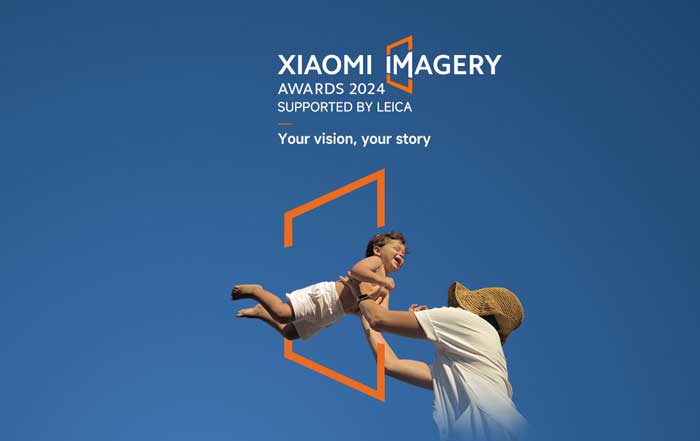In an era defined by accelerating geopolitical shifts, technological transformation, and mounting pressure to reconcile economic growth with environmental sustainability, Europe’s business landscape stands at a pivotal juncture. As upbizinfo.com prepares to offer insights to its global readership, this exploration of the European business markets over the next half-decade is anchored in deep analysis, domain expertise, and a forward-looking posture rooted in trustworthiness and strategic clarity.
This article proceeds by first assessing the macroeconomic context across Europe, then turning to sectoral dynamics, investment and capital markets, regulatory and geopolitical drivers, risks and contingencies, and finally a strategic perspective for business leaders, investors, and policy makers.
Macroeconomic Foundations: Growth, Inflation, Labor, and Trade
Europe confronts an environment of modest growth tempered by significant headwinds. According to the Spring 2025 forecast from the European Commission, the European Union is projected to expand by about 1.1 percent in 2025, while the euro area is expected to grow by approximately 0.9 percent. Over 2026, the EU and euro area are forecasted to grow at 1.5 percent and 1.4 percent respectively. In parallel, macroeconomic forecasters such as Deloitte and the Organisation for Economic Co-operation and Development (OECD) project eurozone growth in 2025 around 1.0 percent, rising to 1.2 percent in 2026. By contrast, earlier in 2025, the European Commission trimmed its own estimates — revising the eurozone forecast downward to 0.9 percent for 2025 — in reflection of increased trade uncertainty and tariff pressures.
This moderate expansion underscores Europe’s underlying structural constraints: aging demographics limiting labor force growth, productivity improvements being sporadic, and investment remaining cautious under a cloud of global policy risk.
Inflation dynamics impose further complexity. The European Central Bank (ECB) projects inflation in the euro area to average roughly 2.1 percent in 2025, easing to 1.7 percent in 2026, before rising modestly to 1.9 percent in 2027. This trajectory implies a soft return to price stability, though core inflation (excluding volatile energy and food) is expected to moderate gradually. Simultaneously, disinflation trends may be aided by trade tensions and easing commodity costs, though wage pressures and services inflation remain potential upside risks.
Labor markets in Europe continue to surprise with resilience. Unemployment rates are near historic lows in many economies, and wage growth remains firm in sectors with skilled labor shortages. This has supported consumption even as investment remains stunted. The IMF’s mission statements emphasize that the European economy remains resilient, but that policy makers must manage the balance between growth and structural constraints.
On the trade front, Europe faces a more volatile global environment. Rising protectionism, especially from the United States, has injected uncertainty into export prospects. Some estimates indicate that European corporates may face weaker earnings—analysts forecast a contraction of around 0.2 percent in third-quarter earnings, largely due to tariff impacts and compressed global demand. At the same time, regional supply chain shifts, localization pressures, and stronger regional trade alliances (e.g. within Europe, with Asia, Africa) offer alternative pathways for firms to navigate evolving trade regimes.
In sum, the macroeconomic foundations across Europe suggest modest but steady expansion, with inflation returning to target ranges, labor demand remaining firm, and external risk as a persistent overhang.
🇪🇺 European Business Markets 2025-2030
Economic Growth Projections
Inflation Trajectory
Strategic Sectors 2025-2030
Green Hydrogen Target
European Private Capital
Equity Market Outlook
Strategic Roadmap to 2030
Sectoral Dynamics: Technology, Banking & Finance, Energy, Manufacturing, and Sustainability
Understanding how individual sectors will evolve is essential for grasping where opportunity and disruption may lie. The following sections assess key verticals that will likely shape Europe’s business markets over the next five years.
Technology, Digital Platforms, and AI
Europe aims to carve its own identity in the global technological race, emphasizing robust regulation, digital sovereignty, and innovation in artificial intelligence (AI). The Digital Markets Act (DMA), now operational across the EU, aims to curb gatekeeper dominance and promote contestability in digital markets. This regulatory framework may restrain the unchecked growth of Big Tech giants within Europe, but also create openings for regional challengers to scale.
AI adoption across European corporations is progressing rapidly, with industrial applications (smart manufacturing, predictive maintenance, supply chain optimization) gaining ground. European business leaders, as surveyed in the 2025 European CEO Outlook, remain relatively sanguine about geopolitical risk and express confidence in their organizations’ resilience. Many expect AI and digital transformation to serve as central pillars of competitive advantage.
Venture capital in Europe, while still trailing the United States and China, has grown sharply. In 2023, European VC invested about €12.9 billion across nearly 4,800 firms; by 2024, European private capital assets rose to around €1.25 trillion, reflecting a growing domestic investor base, pension fund interest, and an expanding entrepreneurial ecosystem. However, Europe still captures only about 5 percent of global venture capital inflows, pointing to an ongoing “scale-up gap” for innovative firms seeking growth beyond national borders.
In parallel, ESG (environmental, social, governance) investing has gained credence in Europe. Research indicates that ESG investments often display greater resilience during market turmoil, particularly in France, which supports the view that sustainability-linked strategies may serve as stabilizing anchors during shocks.
Over the next five years, Europe’s technology sector will likely focus on domain specialization—AI for industrial verticals, edge computing for distributed operations, secure data infrastructure, and movement toward cloud sovereignty. With regulation tightening, European enterprises will need to adopt compliance-by-design, ethical AI frameworks, and interoperability across platforms.
Banking, Finance, and Capital Markets
The European financial ecosystem is poised for a gradual transformation driven by regulatory consolidation, digital innovation, and evolving capital flows. The European Securities and Markets Authority (ESMA) is expanding oversight over crypto firms, exchanges, and cross-border markets to reduce fragmentation and support a unified capital market architecture. This shift toward integration may deepen capital pools, lower transaction friction, and reinforce trust in European financial infrastructure.
Traditional banking remains challenged by low net interest margins, legacy infrastructure, and regulatory capital constraints. Yet digital banking, embedded finance, and fintech convergence offer potential upside. Retail and commercial banks that migrate toward platform business models, building ecosystems around payments, lending, and value-added services, may unlock new revenue streams.
In the equity markets, European stocks are trading at a relative discount compared to U.S. peers. Analysts at Goldman Sachs forecast a ~5 percent uptick in European equities in the near term, driven by improving fundamentals and cash distributions. J.P. Morgan recently upgraded the euro-zone to “overweight,” citing supportive macro catalysts, policy-driven capital expenditure, and lower valuations. Euronext, Europe’s consolidated stock exchange platform, has articulated a strategy titled “Innovate for Growth 2027,” which emphasizes revenue expansion in data, post-trade services, FICC markets, and sustainability-oriented business models. These trends suggest that capital markets in Europe may rekindle investor interest, especially if earnings recover and corporate governance aligns with transparency and ESG mandates.
Private equity and infrastructure investment will continue to play a salient role. As returns on traditional assets compress, institutional investors will increasingly allocate to real assets, green energy projects, digital infrastructure, and alternative credit. Cross-border capital flows may intensify as Europe seeks to attract global capital under the promise of regulatory integrity and long-term returns.
Energy, Green Transition, and Circular Economy
The European Green Deal remains a cornerstone of the continent’s strategic vision, driving a comprehensive transition toward climate-neutral growth by 2050. The policy agenda spans carbon pricing, renewable energy deployment, clean hydrogen, circular economy initiatives, and sectoral decarbonization mandates.
One area of strategic interest is green hydrogen. Studies suggest that Europe, by targeting a production scale of 25 million tons by 2040, can come close to cost-optimal designs under multiple scenarios. This energy vector could serve as a backbone for industrial decarbonization, especially in heavy sectors like steel, chemicals, and shipping. Moreover, carbon border adjustment mechanisms (CBAMs), which penalize high-carbon imports, will shift the competitive landscape—favoring producers with embedded low-carbon profiles and incentivizing decarbonization across global supply chains.
The transition poses challenges as well. Some highly energy-intensive sectors may face cost pressure or delocalization risk. Ensuring a “just transition” that protects employment and regional equity (especially in coal- or fossil-fuel–dependent territories) will test political will and coordination.
Energy system security is another pressing concern. The push for electrification, grid modernization, and interconnection across Europe's regions will necessitate high levels of investment and regulatory harmonization. Innovations in storage, demand response, and sector coupling (e.g. linking power, heat, mobility) will determine the viability of the green transition.
Circular economy models—emphasizing reuse, recycling, product-as-a-service, and resource efficiency—are increasingly embedded in business models. European firms that can pivot to product life extension, modular design, and waste valorization stand to capture competitive advantage. For upbizinfo.com’s readership interested in sustainable business practices, this space will be among the most fertile over the coming decade.
Manufacturing, Industry, and Supply Chains
Europe’s industrial base, once the global standard-bearer, is undergoing reconfiguration rather than simply decline. The future of manufacturing in Europe is likely to hinge on advanced industries: precision engineering, high-end machinery, robotics, aerospace, medical devices, and electric mobility.
Reshoring and nearshoring trends are emerging as geopolitical risk and supply fragility push firms to shorten value chains. That said, cost pressure from Asia and labor constraints in Europe require that manufacturing increasingly integrate automation, digital twins, and additive production.
In the setting of heightened trade friction, sectors such as steel, automotive, and chemicals face structural stress. The EU’s proposal to cut tariff-free steel import quotas by half is expected to benefit European steel producers, but upstream industries (especially automotive) may face higher input costs. European carmakers have already called for more flexible regulation around the 2035 combustion-engine ban, highlighting challenges of energy costs, EV adoption, and competitive pressure from China. Thus, midstream manufacturers must adapt by integrating clean-tech, flexible processes, and cross-border production networks.
Supply chain resilience will be a centerpiece. Firms will expand dual sourcing, inventory buffers, real-time supply-chain visibility, and scenario planning. Digital supply chain platforms, blockchain traceability, and integrated logistics ecosystems will become more standard.
Investment and Capital Flows: From Private Capital to Public Markets
Investors and business leaders must understand capital flows across Europe, how they will evolve, and where strategic opportunity lies.
Venture Capital, Private Equity, and Scale-Ups
Over the next five years, venture capital and private equity will remain critical drivers of innovation and growth. Europe’s VC ecosystem has made strides—yet its persistent challenge remains moving startups into scale-ups and global champions.
VC funding is increasingly focused on deep tech, biotech, fintech, climate tech, and advanced manufacturing. Co-investment models, corporate venture arms, and cross-border syndicates will gain traction. European enterprises that can access follow-on capital and strong governance will likely outperform.
Institutional capital (pension funds, sovereign wealth, insurance) will continue to allocate more to alternatives—particularly infill infrastructure, digital infrastructure, and sustainable real assets. Investment in green energy and mobility infrastructure offers stable cashflows and inflation hedges.
Public Market Opportunities
Equity markets in Europe are positioned for a reacceleration, particularly if earnings begin to recover. Analysts point out that European equities are undervalued relative to U.S. counterparts, offering compelling entry points for long-term investors. Goldman Sachs projects a 5 percent rise in European equities in the near term, driven by favorable macro tailwinds. Meanwhile, J.P. Morgan’s shift to a bullish view for euro-zone equities underscores renewed investor confidence.
Stock exchanges will adapt. Euronext’s “Innovate for Growth 2027” plan positions it to serve as a regional clearing and data hub, deepening capital access for regional firms. Exchange consolidation, cross-border connectivity, and post-trade innovation will reshape capital markets infrastructure.
In debt markets, corporate bond issuance, especially green and transition bonds, is likely to grow. As European firms invest in sustainability and infrastructure, debt financing—tied to ESG metrics—will offer complementary sources of capital.
Cross-Border Capital and Foreign Investment
Global capital flows into Europe face both opportunities and constraints. On one hand, Europe's regulatory transparency and sustainable repositioning are attractive to sovereign and institutional capital. On the other, competition from the U.S. and Asia, currency volatility, and trade uncertainty may temper inflows.
European firms may increasingly tap international capital markets (e.g. U.S. listings, dual listings) to capture broader investor pools. Strategic M&A, cross-border acquisitions, and consolidations within Europe will become more frequent as firms seek scale in a fragmented regional market.
Regulatory, Geopolitical, and Strategic Drivers
The European business outlook over the next five years cannot be separated from the regulatory and geopolitical environment in which it will play out. A deeper understanding of these top-down drivers is crucial for interpreting trend trajectories.
Geopolitical Risk and Strategic Sovereignty
Europe’s geopolitical pressure points are many: the war in Ukraine, tensions with Russia, energy security, U.S.–China rivalry, and growing national assertiveness. European nations have responded with strategic initiatives such as Readiness 2030 (the European defense modernization initiative), signaling a marked commitment to military and defense spending. Defense industrial capacity, defense-linked tech, and supply chain security will become part of Europe’s competitive narrative.
The recalibration of strategic sovereignty extends beyond defense: Europe is asserting greater independence in digital infrastructure, semiconductor design, rare-earth supply chains, and critical minerals. Firms that align with national strategic priorities may gain access to funding incentives and protected markets.
Relations with China and the U.S. will remain central. European firms must navigate decoupling pressures, tariff risk, and shifting trade rules. For many sectors, diplomatic positioning, trade alliances, and geopolitical hedging will determine competitiveness.
Regulatory Reform and Policy Tools
The European regulatory environment is becoming more ambitious. Beyond the Digital Markets Act, Europe is advancing rules on AI governance, ESG disclosures, carbon pricing, data privacy, and taxation harmonization. Enforcement moves upward: ESMA is consolidating oversight across exchanges, crypto platforms, and ratings agencies, while the European Commission is pushing to reinforce unified capital market supervision.
Carbon border adjustments, emissions trading systems, sustainable finance taxonomies, and circular economy mandates will profoundly affect corporate compliance and strategy. Firms will need to embed sustainability, traceability, and stakeholder alignment into their operating models.
Policy tools such as public R&D grants, investment incentives, regional resilience funds, and infrastructure programs will play a decisive role. European industrial policy is reemerging. In navigating incentives and regulatory complexity, business leaders will need deep institutional know-how and long horizon planning.
Risk and Contingency Factors
While growth is modestly favorable, Europe faces significant upside threat vectors. Trade shocks, worsening geopolitical conflicts, stagflation, energy shocks, and policy missteps could stall progress.
Inflation that persistently overshoots expectations could force monetary tightening, strangling investment and consumer demand. Conversely, a failure of debt sustainability in vulnerable member states could reignite sovereign crises.
The scale-up gap in innovation remains a structural risk: failure to grow globally competitive firms may hamper Europe's future growth potential. Demographic decline and skill mismatches further threaten long-term competitiveness.
Businesses must also guard against climate-induced shocks, supply-chain disruptions, cybersecurity risks, and geo-political fragmentation.
Strategic Imperatives for Business Leaders, Investors, and Policymakers
Against this complex backdrop, stakeholders must chart strategies grounded in realism, agility, and long-term orientation.
For Business Leaders and Founders
Over the next five years, European enterprises must build adaptability into their models. That begins with technology adoption—AI, automation, cloud-native design, product modularity, and circular architecture.
Corporate leaders should pursue ecosystems rather than standalone perfection: partnerships, data platforms, service-based revenue flows, and open innovation models. Local compliance, sustainability metrics, and stakeholder alignment must inform strategic decision-making.
In internationalization, European firms should design for outward scale—expanding beyond national borders early and integrating with global networks. They must proactively manage regulatory arbitrage, trade risk, and capital access.
Service-based and subscription models can smooth revenue streams, reduce capital intensity, and align incentives with clients. Organizations that can embed circular and sustainable design into their core offerings will differentiate themselves in increasingly commoditized markets.
Talent strategies will be pivotal. Firms must manage demographic constraints by investing in upskilling, remote talent integration, and flexible workforce models. Diversity, inclusion, and purpose-driven culture will bolster retention.
Finally, leaders should cultivate scenario planning, resilience playbooks, and strategic optionality. Macro volatility is a central characteristic of the coming years—a posture of adaptive readiness will distinguish winners.
For Investors and Capital Allocators
Investors should calibrate expectations to moderate returns but increasing value from structural themes: green transition, digital infrastructure, specialized manufacturing, and climate-linked assets.
A barbell allocation approach—balancing stable income assets (e.g. infrastructure, ESG bonds) with high-growth sillier returns (e.g. AI, biotech scale-ups)—may optimize risk-adjusted returns. Investors should emphasize active governance, alignment with management, and ESG-integrated diligence in European deals.
Public markets offer value opportunities given current valuations. Selective equity positions in industrial, renewable, infrastructure, and digitization sectors may deliver compounded returns if growth reaccelerates. Exposure to regional exchanges, clearinghouses, and post-trade infrastructure may provide leveraged optionality on capital markets modernization.
Investing across borders will be vital. Funds that build pan-European syndicates, cross-listing, and diversified geographic exposure may reduce idiosyncratic risk. Co-investment and consortium structures help manage capital deployment at scale.
Finally, patient capital is key: Europe’s transformation is generational, not cyclical. Investors with a long horizon, disciplined entry points, and structural alignment can navigate volatility for outsized outcomes.
For Policymakers and Public Institutions
Policy makers must align regulatory ambition with predictability, transparency, and industrial coherence. Strategic industrial policy must not merely be symbolic but effectively mobilize capital, skills, and market access.
Harmonizing EU regulation—including capital markets union, digital sovereignty architecture, and ESG frameworks—will improve efficiency and credibility. Supporting research and development, infrastructure, regional cohesion, and workforce transition will enhance competitiveness.
Policymakers should calibrate incentives for green transition, distributing burden equitably and minimizing regional disparities. Instruments like just-transition funds, retraining programs, and structural support may forestall backlash from communities dependent on legacy industries.
In trade diplomacy, Europe should pursue pragmatic balance: preserve market access with Asia and the U.S., while strengthening regional supply autonomy. Transatlantic and Indo-Pacific partnerships may bolster resilience.
Finally, global communication and soft power are critical: Europe must project its norms—ethical AI, sustainability, multilateralism—as attractive models for global engagement.
Outlook & Prognosis: Europe in 2030
By 2030, Europe may look back on the mid-2020s as a phase of transition—where incremental growth, structural alignment, and regulatory recalibration laid the groundwork for renewed dynamism.
On one plausible path, Europe could achieve sustained growth of ~1.5 percent per annum, powered by digital sectors, sustainable infrastructure, and cross-border enterprise scaling. Its capital markets may become deeper and more integrated, enabling domestic champions and attracting global capital flows.
European firms could emerge in areas such as green hydrogen, modular mobility, circular materials, AI-enabled industrial systems, and digital platforms, rooted in regulatory integrity and ESG discipline. The continent might successfully transform trade ecosystems—emphasizing resilience, sovereignty, and export value.
Yet under adverse scenarios, Europe might struggle with demographic headwinds, underinvestment in scale-up, geopolitical fragmentation, or flawed policy execution. Growth could stagnate, capital may return to more dynamic geographies, and industrial capacity may shrink.
The differentiator will be adaptation. Organizations that embed resilience, technology leverage, financial discipline, and purpose orientation will be best positioned. From the vantage of upbizinfo.com’s readership—leaders, investors, founders, policy thinkers—the next five years represent an interval for strategic positioning rather than passive optimism.
Europe will not outgrow structural constraints overnight, but it may reimagine them. For those who navigate the levers—capital, regulation, innovation, sustainability—the European business markets of 2030 may offer not just recovery, but renewed purpose and opportunity.








